|
TRANSLATE THIS ARTICLE
Integral World: Exploring Theories of Everything
An independent forum for a critical discussion of the integral philosophy of Ken Wilber
 David Christopher Lane, Ph.D.
Professor of Philosophy, Mt. San Antonio College Lecturer in Religious Studies, California State University, Long Beach Author of Exposing Cults: When the Skeptical Mind Confronts the Mystical (New York and London: Garland Publishers, 1994) and The Radhasoami Tradition: A Critical History of Guru Succession (New York and London: Garland Publishers, 1992). David Christopher Lane, Ph.D.
Professor of Philosophy, Mt. San Antonio College Lecturer in Religious Studies, California State University, Long Beach Author of Exposing Cults: When the Skeptical Mind Confronts the Mystical (New York and London: Garland Publishers, 1994) and The Radhasoami Tradition: A Critical History of Guru Succession (New York and London: Garland Publishers, 1992).
THE AGNOSTICS
Thinkers in an Indeterminate Cosmos
Introduction |
Isaiah Berlin |
Charles Darwin |
John Dewey |
Enrico Fermi |
David Hume |
Edmund Husserl |
Thomas Henry Huxley |
Thomas Kuhn |
Lynn Margulis |
John Maynard Keynes |
G.E. Moore |
Karl Popper |
Michael Schmidt-Salomon |
Herbert Spencer |
Leo Szilard
LYNN MARGULISMelody YangLynn Margulis is a well-known evolutionary biologist in America She was born on March 5, 1938 in Chicago, Illinois. She grew up with her parents, Morris Alexander and Leona Wise Alexander, along with three other sisters. Throughout her life, she attended a handful of prestigious schools and graduated with multiple degrees, the highest being a Ph.D. from the University of California, Berkeley. Margulis is known for her expansive creativity involving several different fields. She formulated multiple theories including: the endosymbiotic theory, Gaia hypothesis, and the “Five Kingdoms of Life.” She has written over 20 books. Margulis has won several awards for her contributions towards the world of biology. One of the most reputable being the National Medal of Science for Biological Sciences. Many other scientists regard her with admiration because of her evolutionary findings in the world of biology. Sociobiologist E. O. Wilson said that she was the “most successful synthetic thinker of modern biology.” 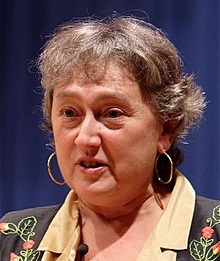 Lynn Margulis At the age of fifteen, Margulis was accepted into the University of Chicago Laboratory Schools. Then, in 1957 she graduated with a Bachelor's degree in Liberal Arts from the University of Chicago. She then attended the University of Wisconsin and graduated with a Master's degree in zoology and genetics. Finally, she obtained her Ph.D. in genetics from the University of California, Berkeley in 1965. After she acquired her Bachelor's degree, she married Carl Sagan, a graduate student from the University of Chicago at the time. They had two children, Dorion Sagan and Jeremy Sagan. Dorion would later become an author and even a collaborator to his mother's work: Acquiring Genomes: A Theory of The Origin of Species. Jeremy became a software developer and founder for Sagan Technology. Lynn Margulis and Carl Sagan ended their marriage in 1964, just before she obtained her PhD from the University of California, Berkeley. Margulis joined the University of Boston in 1966 as a professor. She taught biology at this acclaimed university for 22 years. In 1967, she remarried to crystallographer Thomas N. Margulis. Lynn and Thomas Margulis had 2 more children. They had a son, Zachary Margulis-Ohnuma and a daughter, Jennifer Margulis. Zachary is currently a criminal defense lawyer in New York while Jennifer is an author and teacher. She then went through another divorce in 1980. Through these divorces, she learned that she couldn't manage the dexterity of being a mom, wife, and renowned scientist all at the same time. When she made this realization she stated that, “No one can do it--something has to go”. Following the years after her divorce, she was promoted to Distinguished Professor of Botany at the University of Massachusetts in 1988. The Endosymbiotic theory is an evolutionary theory that deals with the relationship between eukaryotic cells and prokaryotic cells. For years, scientists have questioned the interconnection between mitochondria and chloroplasts. Mitochondria, being the powerhouse of the cell, generates energy that is required for metabolism. Chloroplast captures energy from the sun in order to start the process of photosynthesis. Many scientists have recognized that chloroplast and mitochondria resemble the appearance of bacteria. Scientist Konstantin Mereschkowski first outlined the theory that these organelles had originated from symbiotic bacteria. Consequently, Margulis improved the theory with microbiological evidence in a book titled, Origin of Eukaryotic Cells. In her discoveries, she claimed that eukaryotic cells were once bodies of linked entities. She spoke about endosymbiotic spirochetes and their development into eukaryotic flagella and cilia. Initially, her findings were questioned and criticized by most biologists. This was mainly due to the fact that her theory added a different twist on Darwin’s theory of evolution. Natural selection, which Herbert Spencer first labeled as “survival of the fittest,” explains that competition enables the more resilient organism to survive. However, Margulis’ theory stated that the interconnection between species caused the formation of other adaptations. Through time, her theory has been more widely accepted by credited scientists. In 1982, Margulis and Karlene Schwartz published a book titled Five Kingdoms: Illustrated Guide to the Phyla of Life on Earth. The book contains a five-kingdom system for the classification of organisms on Earth. Her five-kingdom system includes plants, animals, fungi, bacteria (prokaryotes), and protoctists. Her system is roughly accurate and consistent with molecular data and fossil records. However, in the 2000s, most scientists supported the idea that there were more than five kingdoms. She refused to support the three-domain system that was created by Carl Woese in 1990. Although systems with more than five kingdoms are more accepted now, many argue that the reason the five-kingdom system is still talked about is because of Margulis. Another theory that she co-developed was the Gaia hypothesis. The Gaia hypothesis, initially developed by chemist James Lovelock, states that all organisms collaborate with non-living, inorganic material to establish a self-maintaining system on Earth. In yet another book, The Symbiotic Planet, Margulis devotes the last few chapters to the Gaia hypothesis. She comments about the idea of Gaia and about how it's “not an organism.” She then explains that it's actually an “emergent property of interaction among organisms.” She stated that Gaia is an entire system of interconnecting ecosystems that create one, symbiotic ecosystem on Earth. With more research, the original Gaia hypothesis was shown to be incomplete and not wholly accurate. In 1988, the second Gaia conference was held in San Diego, California. At this conference, supporters of Gaia were criticized for its inaccuracy. A professor at the University of California, Berkeley, James Kirchner stated that they had actually presented four different hypotheses. Kirchner spoke about the idea of “weak Gaia” and “strong Gaia.” Following this conference, Margulis wrote about the ideas that Kirchner had brought up. In her essay, "Gaia is a Tough Bitch" (1995), Margulis distinguishes her views on the Gaia hypothesis. She mentions the metaphor of Earth and how it is not a single organism, as Lovelock had argued before. She refutes this argument with the quote, “No organism eats its own waste.” Lynn Margulis was awarded many medals throughout her life. In 1999, she was given the William Procter Prize for Scientific Achievement. The prize was presented by Sigma Xi, a Scientific Research Honor Society that currently has more than 80,000 members. Probably the most prestigious award she received was the National Medal of Science for Biological Science. The award was given by the 42nd President of the United States, Bill Clinton at the White House on March 14, 2000. She was the honoree due to her Theory of Endosymbiosis and contributions of new research in “biological, climatological, geological and planetary sciences.” In 2009, Margulis and a number of other scientists wrote a paper on the topic of AIDS. In the paper, they spoke about symbiotic spirochetes and their changes in the immune system. She essentially thought that spirochetes and their involvement with immune deficiency should be investigated. Many credible journalists criticized her for this paper. Many individuals interpreted the paper to mean that she was in denial of AIDS, that AIDS was just syphilis, having no viral origin. She stated, “There's no scientific paper that proves that the HIV virus causes AIDS.” She was also controversial for her opinions on 9/11. She claimed that, “Certainly, 19 young Arab men and a man in a cave 7,000 miles away, no matter the level of their anger, could not have masterminded and carried out 9/11.” She instead believed in the idea that 9/11 was a “western civilization” version of “the most effective television commercial” and that the Twin Towers collapsed because they were demolished. She was indeed very controversial and was not afraid of holding contrarian ideas. However, as a scientist she also held steadfast to a general agnosticism since it allowed for a more open-ended inquiry into nature. Margulis, contrary to many other scientists who scoff at philosophical speculations, argued that “Scientists resent philosophy. I think this is because they are afraid that philosophers will reveal what scientists really do. I agree with Kierkegaard's assertion that the less support an idea has, the more fervently it must be believed. A totally preposterous idea requires absolute unflinching faith. I suggest that our culture is teeming with preposterous ideas, believed with unflinching faith by scientists and everyone else, and that some of these actually corrupt our potential concern for the Earth. Modem science has given very important insights about life, but our culture prevents us from accepting and utilizing those insights.” She admired Nietzsche's radical approach and even consciously appropriated one of his famous witticisms when she entitled one of her essays, “A Pox Called Man.” As she explained, “My title is from Nietzsche, who said 100 years ago that 'The Earth is a beautiful place, but it has a pox called man.' Nietzsche understood by philosophy 'a terrible explosive in the presence of which everything is in danger.' Scientists are terrified both by philosophy and philosophers. They tend to denounce philosophy as "soft" or deny its relevance, when in fact it has much to say about what scientists do.” Although Margulis wasn't religious and didn't believe in a traditional god, her own agnostic views were seasoned by the mistakes she felt had been made when the world was unnecessarily split into two by what later became widely known as Cartesian dualism. As she lamented, Although Descartes' presentation of the universe as a vast mechanism led to an expansion of scientific investigation, the acceptance of the Cartesian mechanistic universe also had negative implications. On the authority of Descartes, live animals were nailed to boards without remorse to illustrate the facts of anatomy and physiology. Rationalized as unfeeling and inanimate, nature, in the wake of Descartes, was analyzed without fear of trespass. Nature, including the mechanical, automata-like “lower” life-forms, could now be experimented on with impunity. In short, Descartes' philosophy provided a formal justification-a Cartesian license-to investigate virtually everything in an effort to discover the mechanism by which God had “built” the phenomenal world. On November 22, 2011, Lynn Margulis died five days after she had a hemorrhagic stroke. She passed away in Amherst, Massachusetts at the age of 73. Despite her death, her legacy will continue as her life's work widely shaped the world of evolutionary biology. Further Reading1. What is Life?, University of California Press 2. Acquiring Genomes, Basic Books; First Edition edition (June 11, 2003) 3. Slanted Truths: Essays on Gaia, Symbiosis and Evolution, Copernicus; 1997 edition (June 20, 1997) 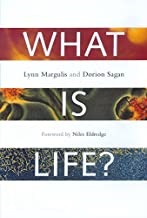 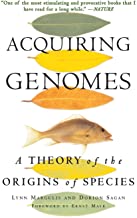 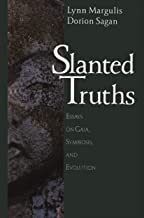 FROM THE INTRODUCTION | DAVID LANE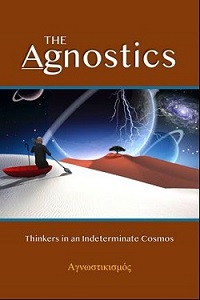
Often in the philosophy classes I have taught in undergraduate and graduate school, I would bring up this point of “unknowingness.” Pointing to a crumpled piece of writing paper, I would ask the class, “What is this?” Almost in unison, the students would respond, "A piece of paper." Taking this as my cue to lead into a deeper philosophical investigation of materialism, I probed further, "Yes, but what is that?” Catching my drift, one student invariably answered, “Oh, it is actually a transformed sheet of wood.” Not wanting them to stop there, I asked, “And wood is made of what?” “It's comprised of molecules," the more scientifically oriented students would shout. Connecting to the now forgotten inner space ride at Disneyland, which takes one through an imaginary voyage inside a snowflake molecule, I queried, “But what is a molecule made of.” By this time, we had gotten down to the subatomic level, and our words began to betray our modicum of knowledge (electrons, protons, quarks, lucky charms, superstring). The final question I asked was quite simple, but given the line of investigation it led to some severe complications: What is matter? Well, it should be obvious to the reader as it was to my class and to myself that there's only one truly appropriate response, “I don't know.” Now, this is exactly the response not only of most mystics, but most quantum physicists as well. As Sir Arthur Eddington, the distinguished astronomer put it, “Something unknown is doing we don't know what!” To be sure, mystics have said that the world (or matter) is nothing but consciousness. But, what is consciousness? Not even a sage as enlightened as Ramana Maharshi of South India could answer that question. To such queries, Ramana would often sit in silence. Ultimately, matter leads to consciousness and consciousness to God or Nature (with a capital N) and both to Mystery. However, no matter how you define it, slice it, categorize it, blend it, intuit it, the fact remains that Reality is a Mystery, and nobody apparently (not me, not you, not Einstein) knows what that Reality is. We are sitting right in the middle of the Mystical Dimension.
Comment Form is loading comments...
|